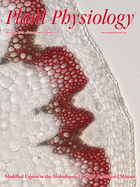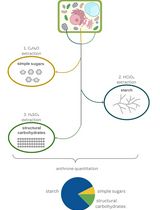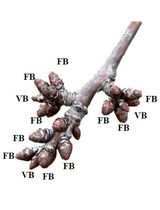- EN - English
- CN - 中文
Saccharification Protocol for Small-scale Lignocellulosic Biomass Samples to Test Processing of Cellulose into Glucose
通过小规模木质纤维素生物质样本的糖化作用测定纤维素降解成葡萄糖的过程
发布: 2016年01月05日第6卷第1期 DOI: 10.21769/BioProtoc.1701 浏览次数: 12274
评审: Maria SinetovaHarrie van ErpAnonymous reviewer(s)
Abstract
Second generation biofuels are derived from inedible lignocellulosic biomass of food and non-food crops. Lignocellulosic biomass is mainly composed of cell walls that contain a large proportion of cellulosic and hemicellulosic polysaccharides. An interesting route to generate biofuels and bio-based materials is via enzymatic hydrolysis of cell wall polysaccharides into fermentable sugars, a process called saccharification. The released sugars can then be fermented to fuels, e.g., by use of yeast.
To test the saccharification efficiency of lignocellulosic biomass on a lab-scale, a manual saccharification protocol was established that uses only small amounts of biomass and a low concentration of enzyme. This protocol can be used for different plant species like Arabidopsis thaliana, tobacco, maize and poplar. The low enzyme concentrations make it possible to detect subtle improvements in saccharification yield and to analyze the speed of hydrolysis. Although a specific acid and alkali pretreatment were included, the saccharification step can be preceded by any other pretreatment. Because no advanced equipment is necessary, this protocol can be carried out in many laboratories to analyze saccharification yield. The protocol was initially described in Van Acker et al. (2013).
Materials and Reagents
- pH-indicator paper (pH 1-14) (Merck Millipore Corporation, catalog number: 1109620003 )
- Disposable PD-10 desalting columns (VWR International, catalog number: 95017001 )
- Whatman® qualitative filter paper, Grade 1 (Sigma-Aldrich, catalog number: WHA1001110 )
- Safe-Lock tubes 2 ml (Thermo Fisher Scientific, Eppendorf, catalog number: 3706 )
- Corning® 15 ml centrifuge tubes (Sigma-Aldrich, catalog number: CLS430790 )
- Corning® 50 ml centrifuge tubes (Sigma-Aldrich, catalog number: CLS430290 )
Note: Pricing & availability is not currently available. - Nunc 96-well microplate without lid and flat bottom wells (Thermo Fisher Scientific, catalog number: 269787 )
- Parafilm (Bemis Flexible Packaging)
- Sodium acetate trihydrate (CH3COONa.3H2O) (Sigma-Aldrich, catalog number: S8625-250 G )
- Sodium azide (NaN3) (Sigma-Aldrich, catalog number: 71290-100 g )
- Cellulase from Trichoderma reesei ATCC 26291 (Sigma-Aldrich, catalog number: C2730 )
- Accellerase® BG from Trichoderma reesei (Genencor, DuPont)
- D-glucose (C6H12O6) (Sigma-Aldrich, catalog number: G8270-1 kg )
- Glucose oxidase from Aspergillus niger (Sigma-Aldrich, catalog number: G6125-50KU )
- Peroxidase from horse radish (Roche Diagnostics, catalog number: 10814407001 )
- 2, 2’-azino-bis(3-ethylbenzothiazoline-6-sulphonic acid) (ABTS) (Roche Diagnostics, catalog number: 11112422001 )
- Hydrochloric acid fuming 37% (Merck Millipore Corporation, catalog number: 1003171000 )
- Sodium hydroxide pellets for analysis (Merck Millipore Corporation, catalog number: 1064981000 )
- Ethanol (Merck Millipore Corporation, catalog number: 1009901001 )
- Acetone (Merck Millipore Corporation, catalog number: 1000121000 )
- Glacial acetic acid (Merck Millipore Corporation, catalog number: 1000631000 )
- MilliQ-water
- 0.1 M acetic acid buffer solution (pH 4.5) (see Recipes)
- 0.1 M acetic acid buffer solution (pH 4.8) (see Recipes)
- Glucose oxidase (GOD) – peroxidase (POD) solution (see Recipes)
Equipment
- Balance (Mettler Toledo, model: XP-105 Delta Range)
- Thermoblock (Thermo Fisher Scientific, Eppendorf, model: Thermomixer Compact )
- Temperature controlled benchtop microcentrifuge (Thermo Fisher Scientific, Eppendorf, model: 5417R )
- Temperature controlled microplate spectrophotometer (Molecular Devices, model: Spectra Max 250 )
- Acid-resistant CentriVap Centrifugal Vacuum Concentrator (Labconco, catalog number: 7810016 )
- Oven at 37 °C
- Tripod with clamp and knots (VWR International, catalog numbers: 2410093 and 2410258 )
- Volumetric flask of 100 ml (Duran Group, catalog number: 246712556 )
- Rotilabo® Sealing films for microtest plates (Carl Roth GmbH + Co., catalog number: EN76.1 )
- Microcentrifuge (LabSource, VWR International, catalog number: 37001298 )
Procedure
文章信息
版权信息
© 2016 The Authors; exclusive licensee Bio-protocol LLC.
如何引用
Acker, R. V., Vanholme, R., Piens, K. and Boerjan, W. (2016). Saccharification Protocol for Small-scale Lignocellulosic Biomass Samples to Test Processing of Cellulose into Glucose. Bio-protocol 6(1): e1701. DOI: 10.21769/BioProtoc.1701.
分类
植物科学 > 植物生物化学 > 糖类
生物化学 > 糖类 > 多糖
您对这篇实验方法有问题吗?
在此处发布您的问题,我们将邀请本文作者来回答。同时,我们会将您的问题发布到Bio-protocol Exchange,以便寻求社区成员的帮助。
Share
Bluesky
X
Copy link














